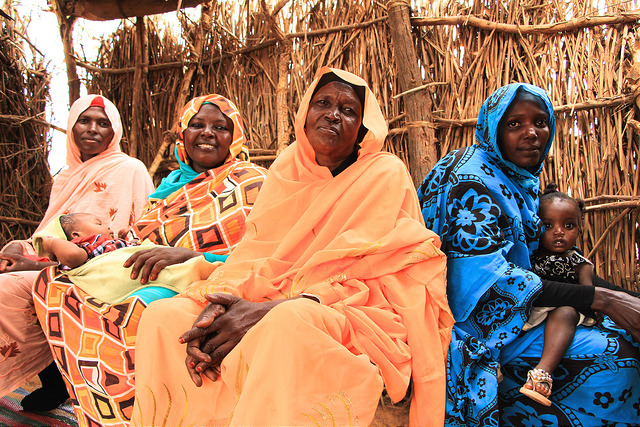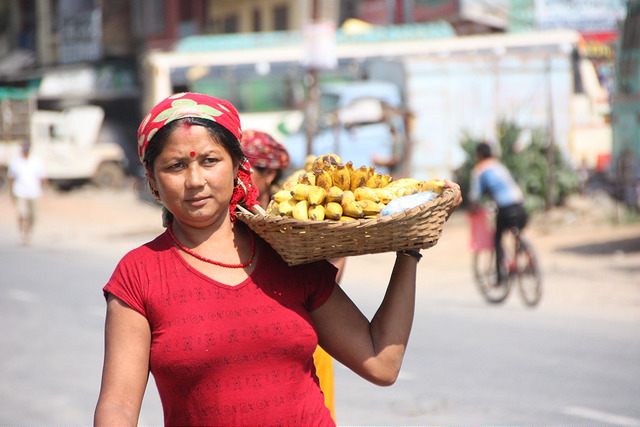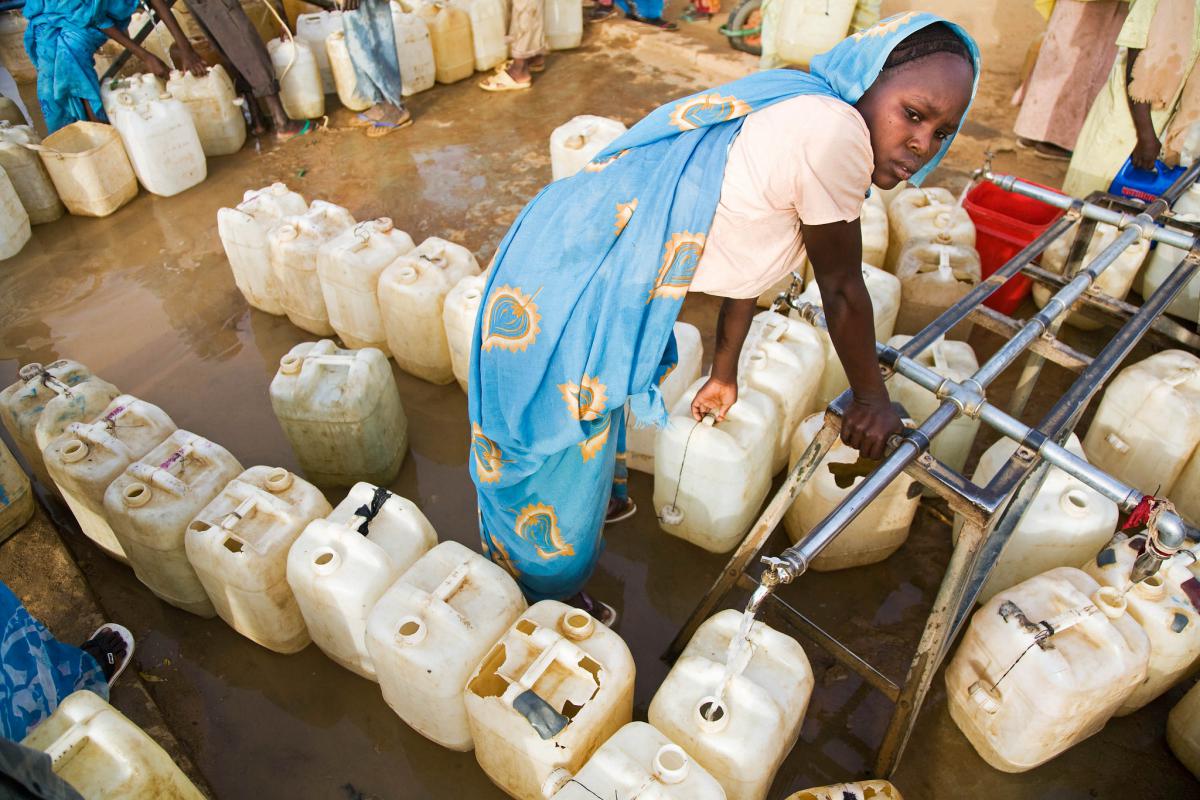Connecting the Dots: Natural resources, women and peace
To celebrate International Women’s Day, we spoke with Silja Halle of UN Environment to discuss the opportunities presented by environment and natural resources to strengthen women’s participation in peace processes.
Between 1992 and 2011, less than 10 per cent of negotiators and signatories of peace processes were women.
In the recent peace process with the FARC in Colombia, however, women made up one third of participants, and the resulting peace agreement stands as a model of integration of gender equality and women’s rights as a core principle of a peaceful society. In addition, the Colombian peace process with the FARC fully recognized that sound natural resource management and environmental protection were integral to the achievement of peace and sustainable development.
Silja Halle, Programme Officer with UN Environment’s Post-Conflict and Disaster Management Branch, works internationally towards the integration of gender and natural resources into peacebuilding processes, like in Colombia.
To celebrate International Women’s Day on March 8, 2018, we sat down with Halle to discuss the importance of being gender-responsive in conflict-affected contexts, and how this relates to natural resource management and comprehensive sustainability.
Clare Church (CC): Why is it essential for women to be involved in peacebuilding processes?
Silja Halle (SH): By marginalizing women at the peace table, we undermine the prospect of dealing with the core drivers of conflict, including the environment and natural resources. Women represent only 4 per cent of signatories and less than 10 per cent of negotiators of peace agreements. This is unacceptable, when we are really trying to drive women’s future economic and political development internationally.

Photo credit: 2017 © Dimah Gasim/UN Environment
We also know that this exclusion of women at the peace table is a missed opportunity, because one important part of engaging women in peace processes is that they broaden the conversations taking place. And ultimately, this leads to better chances of community buy-in and addressing the root causes of the problem. In fact, research demonstrates that women’s participation increases the probability of a peace agreement lasting 15 years by 35 per cent.
CC: So if including women in peacebuilding processes relates to a better chance at lasting peace, how does this relate to natural resources?
SH: Among the root causes or drivers of conflict, it’s the women who consistently identify natural resources and the environment. This is mainly because they are so heavily involved in natural resource management from a livelihood perspective and because many are dependent on natural resources for their livelihoods and well-being. For example, women make up 43 per cent of the agricultural labour force in developing countries, two thirds of livestock keepers worldwide and 30 per cent of artisanal miners.
So when we incorporate women at the peace talks, we see that they bring the important issue of natural resources to the table. And not only this, they have the knowledge to discuss it.
By failing to engage women in peacebuilding processes and negotiations, these processes risk not only weakening how natural resource issues are addressed, but can also limit the potential for women to participate in natural resource governance and benefit from resource-related reforms.
CC: Aside from the peacebuilding processes, how else can gender affect conflict and the environment?
SH: Throughout periods of conflict, there can be a shifting of gender norms. For example, if men leave their communities to participate in conflict, spaces in the economic and political spheres open up for women. Land too, can open up for women. But these shifts are not necessarily maintained in the post-conflict period. Rollbacks often occur.

Photo credit: 2015 © Purna Chandra Lal Rajbhandari, UNEP
In Côte d’Ivoire, for example, women’s roles are more typically to produce food, whereas men more often cultivate export crops, like cocoa and coffee. In post-conflict Côte d’Ivoire, a number of agricultural support programs came in to kick-start the economy by investing in export crops. However, this structurally discriminated against women, because of their lack of involvement in cultivating those specific crops. And now, despite 75 per cent of Côte d’Ivoire’s national territory consisting of arable agricultural land, Côte d’Ivoire is a net importer of food products, like rice, wheat, corn and dairy.
Development aid for women in post-conflict situations is largely concentrated in health and education, which of course are both very important sectors. But less than 2 per cent of development aid targets gender equality in economic and political sectors. This is even lower for conflict-affected areas. As a result, many of the gains in women’s employment and income-generation that occur during conflict are often lost after conflict.
CC: How does your work with UN Environment incorporate these three themes of gender, natural resources and conflict?
SH: I am the Program Coordinator on Women, Natural Resources, and Peace, which means I manage the Joint UN Environment, UNDP, UN Women and PBSO Programme on promoting gender-responsive approaches to natural resource management for peacebuilding.
These organizations came together because they were all working on different aspects of the peace and security continuum. There was a developing evidence base about how natural resources, the environment and climate change interacted with conflict. But we were realizing that, in looking at the interactions between the environment and conflict, we had not yet tackled the gender dimensions and what this meant for women.
Similarly, a lot of work had been done on women, peace and security since the adoption of UN Security Council Resolution 1325 in 2000, but with very little understanding of how environment and natural resources could support this agenda.
Women should be empowered to participate in dialogue, mediation and conflict resolution efforts, governance and decision-making at all levels, and economic recovery and sustainable development.
So we all set out—with our different mandates and expertise—to understand how these issues were interlinked and what we could do address the programming gaps in this area.
CC: What has this partnership been able to accomplish so far?
SH: The first phase of our work was to produce the report, which came out in 2013, entitled Women and Natural Resources: Unlocking the Peacebuilding Potential. The report involves an in-depth analysis of the gender dimensions of conflict as they relate to renewable resources—like water, land, and forestry—and extractive resources—like mining and timber.
What we really wanted to know was: how gender dynamics—which are power dynamics—influence how men and women, girls and boys are impacted by the environment, conflict and peacebuilding issues; what can be done to address the imbalances and inequities in peacebuilding programming; and, ultimately, how peace can be strengthened by addressing these issues together.
We are in the second phase of our work, where the goal is to develop best practices and programming guidance for people in the field so that they can better integrate gender-responsive approaches to natural resource programming in peacebuilding processes. We are currently running two pilot projects, one in Sudan and one in Colombia. And through both, we are looking at specific ways of engaging women in natural resource conflict resolution, natural resource governance and natural resource conflict prevention.
Based on what we learn from the pilots, we will be producing guidance for practitioners; developing a web platform for a community of practice, which will include a resource centre; and continuing to advocate for better programming around these issues through storytelling and film.
CC: Looking forward, what do you think people should pay special attention to when looking at natural resources and conflict?
SH: Primarily, I think it’s essential to note that interventions around natural resources in peacebuilding processes provide momentous opportunities to empower women politically and economically. And ultimately, through these interventions, we can strengthen women’s contributions to lasting peace and sustainability.
Women should be empowered to participate in dialogue, mediation and conflict resolution efforts, governance and decision-making at all levels, and economic recovery and sustainable development. This is a critical step towards sustaining peace and sustainable natural resource management.

Photo credit: 2010 © Photo by Albert Gonzalez Farran - UNAMID
And lastly, we should be aware that targeted support is needed to overcome the many social, cultural and structural barriers women face in benefitting from the opportunities presented by natural resources. Where we invest when it comes to supporting women’s empowerment and gender equality in conflict-affected or fragile countries is a big part of this equation. By supporting women, we are not only furthering gender responsiveness and integration, but we are also making positive steps towards the environment and peace.
You might also be interested in
Advancing Gender Equality and Human Rights at COP 29: Why intersectionality matters
There has been resistance to integrating intersectionality language in UNFCCC discussions, but Angie Dazé explains why it is a key step toward climate justice.
Effectively Delivering on Climate and Nature: NDCs, NAPs and NBSAPs Synergies
This checklist for national policy-makers illustrates potential opportunities and interactions during the development or update of the nationally determined contribution (NDC), National Adaptation Plan (NAP), and national biodiversity strategies and action plan (NBSAP).
How to Make Nature-Based Solutions for Adaptation Work for Everyone
Effective nature-based solutions (NbS) for adaptation start with integrated climate risk assessments. These take-aways will help practitioners plan for inclusive and sustainable NbS.
Inclusive Nature-Based Solutions for Climate Adaptation
Discover how climate change and biodiversity loss impact people differently and how inclusive nature-based solutions for adaptation can help.
